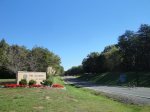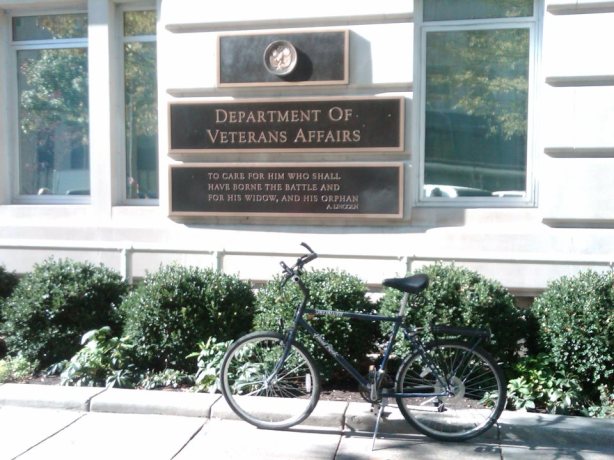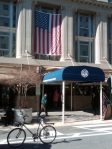As I was riding around Downtown D.C. on this bike ride, I found myself riding past the Environmental Protection Agency (EPA) headquarters building, which is located in the Woodrow Wilson Plaza at 1200 Pennsylvania Avenue (MAP). Now, I had never really thought that much about the EPA. I had heard about it from time to time in the news, most recently in regard to the water contamination and public health crisis that occurred in Flint, Michigan. But I knew little else. So I decided to look into it and find out more after my ride. And I learned the following.
The EPA is an independent executive agency of the Federal government that began in December of 1970 during the Nixon Administration. The EPA is not a Cabinet department, but the administrator, who is appointed by the president and approved by the Senate, is normally given cabinet rank. The agency is comprised of just under 14,000 employees, half of whom are engineers, scientists, and environmental protection specialists; while other employees include legal, public affairs, financial, and information technologists. Employees work at either the headquarters building here in D.C., one of ten regional field offices, or one of the agency’s 27 laboratories located throughout the United States.
The EPA’s mission is the protection of human health and the environment. They provide technical assistance to support recovery planning of public health and infrastructure, such as waste water treatment plants. The agency conducts environmental assessment, research, and education. It has the responsibility of maintaining and enforcing national standards under a variety of environmental laws, in consultation with state, tribal, and local governments. It delegates some permitting, monitoring, and enforcement responsibility to U.S. states and the federally recognized tribes. EPA enforcement powers include fines, sanctions, and other measures. The agency also works with industries and all levels of government in a wide variety of voluntary pollution prevention programs and energy conservation efforts.
While I was still at the headquarters building during my ride, however, I saw a sign on the agency’s very small grounds. So I went over to check it out. So I went over to check it out, The sign is for an exhibit entitled, “Landscaping with Rain Gardens.” So I decided to learn more about rain gardens as well.
A rain garden is a depressed area in the landscape that collects rain water from a roof, driveway or street and allows it to soak into the ground. Most often planted with grasses and flowering perennials, rain gardens can be a cost effective and beautiful way to reduce runoff from property, especially large properties like buildings in cities or parking lots at malls. Rain gardens can also help filter out pollutants in runoff and provide food and shelter for butterflies, song birds and other wildlife. Of course it is a little more complex than simply planting a few plants. So the EPA has some informational resources on its website, and I have provided links to that information below.
So with Spring just beginning, I encourage everyone to also learn about and maybe even plant a rain garden. It not only helps make natural areas more attractive, but allows us to help offset the impact that our presence and the presence of our homes and other buildings have on the environment.
The sign reads, “In front of you is a rain garden, also called a bioretention cell, designed to act as a sponge and to filter stormwater runoff. It has specialty selected soils and plants that are both water and drought tolerant. Rain gardens are designed to mimic natural processes enforce or meadows where rainfall is evaporated, taken up by plans or drained into the soil. Rain gardens are simple to build and can be installed and residential yards, schools, parks, parking lots, a long roads – almost anywhere.”


[Click on the photos to view the full-size versions]
NOTE: Information and instructions for rain gardens from the EPA website.
• Rain Gardens, Green Infrastructure
• Bioretention Illustrated: A Visual Guide for Constructing, Inspecting, Maintaining and
Verifying the Bioretention Practice
• Water-Smart Landscape Design Tips
• What To Plant Database for native plants in your area
• Woody Shrubs for Stormwater Retention Practices
• Rain Garden Outreach and Communication How-to-Guide










































